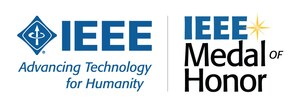Proceedings of the IEEE Presents Most Comprehensive Metamaterials Analysis Ever Assembled
First-Ever Holistic Approach Cites Innovative Application Concepts to Improve MRI Readability; Increase Computer Speed; Expand Bandwidth; Enhance Mobile Phone Performance
PISCATAWAY, N.J., Nov. 7, 2011 /PRNewswire/ -- The future of the metamaterials field shows great promise for achieving exotic new functions according to the new Proceedings of the IEEE, the most highly-cited general-interest journal in electrical engineering and computer science, approaching its 100th year of publication in 2012. Entitled "Metamaterials: Fundamentals and Applications in the Microwave and Optical Regimes," the 16-article issue, written by internationally renowned leaders in the field is packed with innovative research reports on potential new functions and insights that could impact many aspects of life from enhancing readability of MRIs to increasing computer speed and improving bandwidth and cell phone performance.
While practical applications of bulk metamaterials are still far from being developed, research suggests that healthcare could benefit from new metamaterials applications. The paper, "Bulk Metamaterials Made of Resonant Rings," references the potential of a metamaterials application that could improve diagnostic accuracy of Magnetic Resonance Imaging (MRI) by making reports clearer to read. The paper also makes use of a rigorous homogenization treatment of these metamaterials and discusses an exciting application of such magnetic metamaterials for enhancing the resolution of surface coils in magnetic resonance imaging.
Improving cell phone performance by reducing the size of antennas is addressed in three papers. A variety of antennas have already been engineered with metamaterials (MTMs) and metamaterials-inspired constructs to improve their performance characteristics. But, right now, inside our phones, we still have one antenna dedicated to a given voice or data transmission. In the next couple of years, instead of one antenna, the research examines using metamaterials to enable packing the phones with several small antennas in order to dramatically increase capacity for applications such as video streaming and multimedia combined with improved quality of service.
The paper "Metamaterials-Inspired Engineering of Antennas" covers faster data loading times and higher performance streaming. The focus is on the realization of electrically small but efficient antennas using metamaterial loading. Multiband and multi-frequency antennas are also discussed. According to the paper, "At the heart of any wireless system is an antenna. MTMs whether explicitly introduced into an antenna system as physical constructs or implicitly introduced using their often exotic properties to guide specifics of a design provide exciting new opportunities for antenna engineers to meet the needs of a continually increasing demand for wireless products."
Also on the topic of phone antennas, the paper, "Narrowband and Wideband Metamaterial Antennas Based on Degenerate Band Edge and Magnetic Photonic Crystals," describes electrical small antennas based on unique anisotropic metamaterial structures. While the authors present several new antenna elements of much smaller size, they explain that this was done by exploiting wave slow-down techniques afforded by emulating in-plane anisotropy using simple coupled transmission line concepts. Of importance was the utilization of these elements within an antenna array to realize much smaller conformal and thin apertures achieving remarkable bandwidths as much as 10:1.
"Optical Metamaterials Based on Optical Nanocircuits" is the title of a third of four articles in the optics area and puts forward possible scenarios for the design of metamaterials in the optical regime by applying the nanocircuit concepts based on suitably arranged collections of nanoparticles. The article contains an overview and a thorough discussion of the benefits of the optical nanocircuit paradigm to the design and realization of improving computers speed with faster data and video, which could also be a benefit from the work being done in the optics metamaterials field. While it is still a theoretical concept, a method has been developed for using optical metamaterials structures to help decrease data loss and improve computer speed, which ultimately means faster data and video.
For more information on Proceedings of the IEEE, visit http://ieeexplore.ieee.org/xpl/RecentIssue.jsp?punumber=5. For more information on IEEE, log on to www.ieee.org. For media requests of specific papers, please email Lauren Russ at [email protected].
SOURCE IEEE
WANT YOUR COMPANY'S NEWS FEATURED ON PRNEWSWIRE.COM?
Newsrooms &
Influencers
Digital Media
Outlets
Journalists
Opted In






Share this article